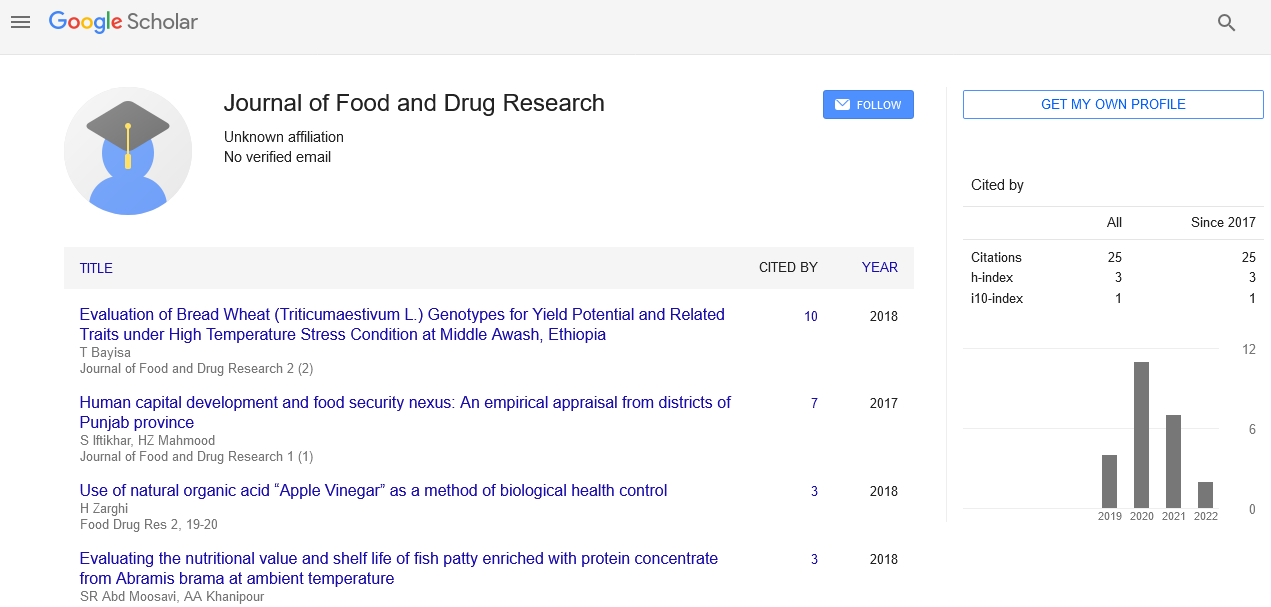A short note on multiple drug intolerance syndrome
Received: 17-Nov-2021 Accepted Date: Nov 23, 2021; Published: 30-Nov-2021
This open-access article is distributed under the terms of the Creative Commons Attribution Non-Commercial License (CC BY-NC) (http://creativecommons.org/licenses/by-nc/4.0/), which permits reuse, distribution and reproduction of the article, provided that the original work is properly cited and the reuse is restricted to noncommercial purposes. For commercial reuse, contact reprints@pulsus.com
Commentary
Multiple drug intolerance is defined as three or more drug intolerance that is not allergic. Multiple drug intolerance is more likely to occur with age as the rate of exposure to lifestyle drugs increases. It is most common in women and individuals who are treated with high numbers of different health conditions. Multiple drug intolerance can occur in patients with allergies as reported in patients who are allergic to penicillin and quinolones antibiotics.
The mechanisms underlying MDIS are not well understood, but some researchers have proposed the concept of indirect histamine release by mast cells and basophils. This raises the presence of autoreactive antibodies in the serum of patients with MDIS. It is thought that these antibodies, when initiated by certain drugs, may direct the high affinity IgE receptor (FcεRI) to trigger histamine release. Patients who have experienced a drug reaction may have negative thoughts associated with that medication. In addition, patients tend to have higher levels of anxiety prior to selected procedures. These negative perceptions are likely to contribute to the affected symptoms reported for MDIS patients on criminal drugs. As a result, physicians may find it difficult to distinguish between symptoms of drug-induced symptoms.
Multiple drug intolerance is associated with anxiety, but not so much with immunoglobulin E (IgE) -mediated allergy or life-threatening illness. Multiple drug intolerance can be controlled with medication avoidance. Diagnosis is another discharge, in which cases better known as intolerance to other NSAIDs in patients with spontaneous urticaria or cross-reactivity to similar structural drugs - for example, beta-lactam need to be ruled out. Of all the books available, female genital mutilation is the one that is most consistent. MDIS patients often have multiple co-morbidities and use multiple medications and health care services; However, the most common diagnosis is usually non-communicable conditions such as gastrooesophageal reflux, dermatitis, hypertension and various types of pain. Proven anaphylaxis or severe drug reactions will increase the likelihood of a positive allergy test and the challenge repeated (if indicated). Cephalosporin and quinolone ADRs were the most important predictors of MDIS. In contrast, penicillin allergy was not associated with MDIS, whereas the chances of MDIS were significantly lower in those with allergies to nuts, shellfish, and aspirin compared to other NSAIDs and other non-beta-lactam antibiotics. The pathogenesis of MDIS or MDH is clear, and it is possible that different mechanisms are involved across a wide range of different patients. First, in most cases the ADR on MDIS may not be ill, perhaps with unknown unintentional drug actions. Second, the reaction may be pseudoallergic - a reaction with clinical features that promote the release of mast-cell mediator - for example, urticaria - but not antibody- (IgE) or T-cell-mediated. Recently, the novel mast-cell G-protein coupled receptor has been identified and shown to cause mast-cell degeneration by responding to different cationic chemical compounds that contain a common structural motif. Unpublished data suggest that highly polymorphic receptor influences performance levels; it is therefore reasonable to assume that different people may have lower performance limits. Third, other unknown receptors or other non-IgE mechanisms may be associated with these ADRs. Finally, there are patients with IgE-mediated or T-cellmediated reactivity confirmed in many different drugs. The abnormality of T-regulatory functions or the increasing frequency of certain numbers of active T cells have been affected. MDIS patients are a particularly challenging. They often see many doctors and have a long list of related conditions and ADRs. They use unequal health care resources and bring about problems caused by not being able to treat doctors so they can use the first-line treatment.
Acknowledgements
None
Conflicts of Interest
None






